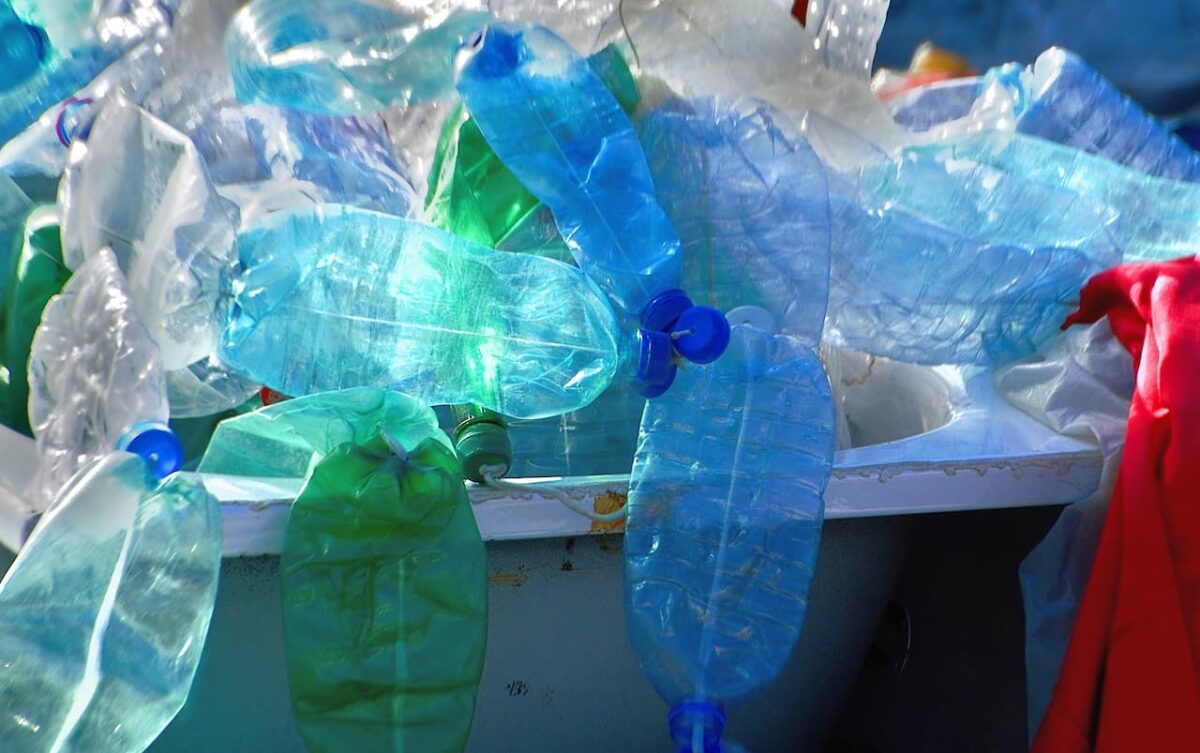Plastic is a major problem for the environment, with its accumulation in landfills, oceans and other ecosystems having a damaging effect on the environment for many years. The production of plastic has grown exponentially over the past few decades and its use has become ubiquitous. This increase in plastic production has caused an array of environmental issues. From polluting rivers and streams to affecting wildlife, research shows that plastic is a major source of environmental damage.
Plastic pollution affects land, water and air in various ways. On land, plastic waste accumulates in the form of garbage and litter, often ending up in the ocean or other bodies of water. Plastic also makes its way into rivers and streams, where it breaks down into smaller pieces known as microplastics. These microplastics can be ingested by animals, such as fish and birds, leading to a range of health problems. In addition, plastic debris can block drainage systems and clog waterways, preventing the flow of water.
Plastic also affects the air quality in our environment. As plastic breaks down, it releases various chemicals into the atmosphere that can be hazardous to human health. These chemicals can cause respiratory problems and other ailments when breathed in.
To reduce the amount of plastic entering the environment, it is important to take steps to reduce our reliance on single-use plastic products. This can be done by using reusable shopping bags and containers, buying items with less packaging and avoiding unnecessary plastics. Additionally, recycling plastic products and properly disposing of waste can help to reduce the amount of plastic that ends up in landfills and other ecosystems. Governments and organizations are also taking steps to reduce plastic use, such as introducing bans on certain single-use plastics. By taking these measures, it is possible to reduce the amount of plastic entering the environment and mitigate its damaging effects.
The long-term effects of plastic on the environment are still not fully understood, but research shows that it can have a significant impact on wildlife and ecosystems. Animals, such as fish and birds, can become entangled in plastic debris or ingest microplastics, leading to a range of health problems. In addition, plastic debris can interfere with natural processes such as photosynthesis and nutrient cycling in plants . By taking steps to reduce our reliance on single-use plastic products and properly disposing of waste, it is possible to reduce the amount of plastic entering the environment and mitigate its damaging effects.
Globally, only 9% of plastic waste is recycled and 12% goes through incinerators. The vast majority ends up in landfills, or worse, straight into the environment.
The problem of plastic in ecology is a pressing one, with serious consequences for our planet’s ecosystems. Plastic pollution has been found in almost every corner of the world — from remote Arctic regions to the deepest parts of the ocean — and it’s estimated that 8 million tons of plastic waste enter our oceans every year.
Plastic pollution can have a devastating impact on wildlife, with research showing that more than 600 species have been affected by microplastics. From birds to fish to mammals, these small pieces of plastic can cause injury and death when ingested, as well as disrupt the natural food chain.
In addition to its effects on wildlife, plastic pollution can also be a major source of water and air pollution. As plastic breaks down over time, it releases chemicals into the atmosphere and water, which can be hazardous to human health.
The only way to truly address the problem of plastic in ecology is to reduce our reliance on single-use plastic products and properly dispose of waste. It is also important to recycle plastic where possible, as well as lobby local governments to introduce bans on certain types of plastics. By taking these steps, we can help reduce the amount of plastic entering the environment and mitigate its damaging effects.
Fighting plastic pollution
With plastic pollution being one of the biggest threats to our environment, fighting plastic pollution is of utmost importance. In order to effectively combat the issue, we must first understand the problem and all its components.
In order to reduce the amount of plastic in our ecosystems, we must first start with minimizing our reliance on single-use plastics. This can be done by bringing reusable shopping bags and containers when shopping, buying items with less packaging, and avoiding unnecessary plastics. We can also make sure that we are properly disposing of our plastic waste and recycling when possible.
In addition to these steps, it is also important to lobby local governments to introduce bans on certain types of single-use plastics. By taking these measures, we can help reduce the amount of plastic entering our environment and mitigate its damaging effects.
The crisis of plastic pollution has far-reaching implications, not only threatening the health of our planet’s wildlife and ecosystems but also potentially impacting human health. Plastic pollution contains an array of harmful chemicals which can be released into the environment. These toxins have been linked to a range of health issues, from respiratory problems to neurological disorders.
In addition to its direct effects on human health, plastic pollution can also have indirect impacts, such as through the destruction of habitats and disruption of food webs.
It’s clear that efforts to combat plastic pollution must be taken in order to protect both our planet and our people. By reducing our reliance on single-use plastics and properly disposing of waste, we can help reduce the amount of plastic entering the environment and mitigate its damaging effects.
